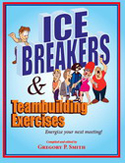Conflict in the workplace is a painful reality and a key reason for poor productivity and frustration. Do you have people in your workplace that cause problems for everyone else? Do they create additional work for others? One point is clear–conflict does not magically go away and only gets worse when ignored.
Certain types of workplace conflict are readily identified. Other forms of conflict may not be so easily detected. Small, irritating events such as negative attitudes occur repeatedly over time and can cause people to strike out at each other. In many cases, conflict occurs at the senior level of the organization. In these situations some kind of intervention is needed.
What type of workplace conflict requires intervention? Anything that disrupts the office, impacts on productivity or poses a threat to other employees needs addressing. The degree to which you tolerate a situation before intervention may vary. A manager may not feel it necessary to intervene when a minor exchange of words occurs between employees–unless such an incident becomes a daily occurrence and expands beyond the employees initially involved. However, a situation where one employee threatens another requires immediate action. When handling conflict, some basic guidelines apply.
Understand the situation. Few situations are exactly as they seem or as presented to you by others. Before you try to settle the conflict insure you have investigated both sides of the issue.
Acknowledge the problem. I remember an exchange between two board members. One member was frustrated with the direction the organization was taking. He told the other, “Just don’t worry about it. It isn’t that important.” Keep in mind what appears to be a small issue to you can be a major issue with another. Acknowledging the frustration and concerns is an important step in resolving the conflict.
Be patient and take your time. The old adage, “Haste makes waste,” has more truth in it than we sometimes realize. Take time to evaluate all information. A too-quick decision does more harm than good when it turns out to be the wrong decision and further alienating the individual involved.
Avoid using coercion and intimidation. Emotional outbursts or coercing people may stop the problem temporarily, but do not fool yourself into thinking it is a long-term solution. Odds are the problem will resurface. At that point not only will you have the initial problem to deal with, but also the angry feelings that have festered below the surface during the interim.
Focus on the problem, not the individual. Most people have known at least one “problematic individual” during their work experience. Avoid your own pre-conceived attitudes about individuals. Person X may not be the most congenial individual on your staff. This does not mean they do not have a legitimate problem or issue. Focus on identifying and resolving the conflict. If, after careful and thorough analysis, you determine the individual is the problem, then focus on the individual at that point.
Establish guidelines. Before conducting a formal meeting between individuals, get both parties to agree to a few meeting guidelines. Ask them to express themselves calmly—as unemotionally as possible. Have them agree to attempt to understand each other’s perspective. Tell them if they violate the guidelines the meeting will come to an end.
Keep the communication open. The ultimate goal in conflict resolution is for both parties to resolve the issue between themselves. Allow both parties to express their viewpoint, but also share your perspective. Attempt to facilitate the meeting and help them pinpoint the real issue causing conflict.
Act decisively. Once you have taken time to gather information, talked to all the parties involved, and reviewed all the circumstances, make your decision and act. Don’t leave the issue in limbo. Taking too long to make a decision could damage your credibility and their perception of you. They may view you as either too weak, too uncaring, or both, to handle the problem. Not everyone will agree with your decision, but at least they will know where you stand.
Greg Smith’s cutting-edge keynotes, consulting, and training programs have helped businesses improve communication, reduce turnover, increase sales, hire better people and deliver better customer service. As President and founder of Chart Your Course International he has implemented professional development programs for thousands of organizations globally. He has authored nine informative books including 401 Proven Ways to Retain Your Best Employees. He lives in Conyers, Georgia. Sign up for his free Navigator Newsletter by visiting www.ChartCourse.com or call (770) 860-9464.
No related posts.
















Pingback: How To Resolve Workplace Conflicts | Mikey Likes It